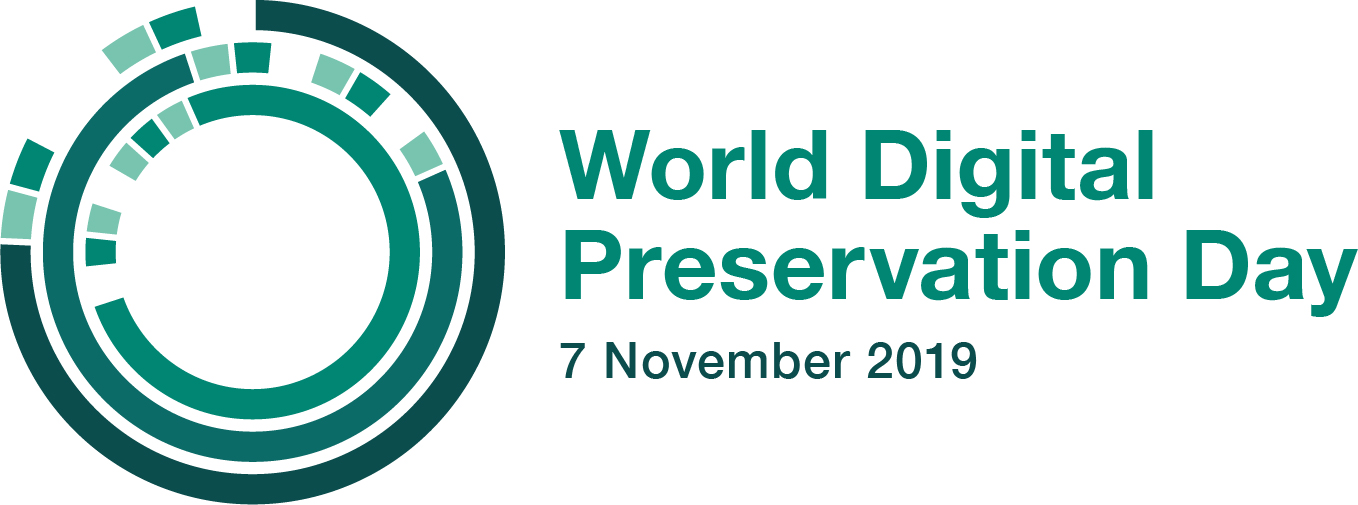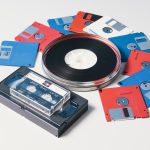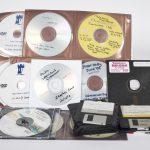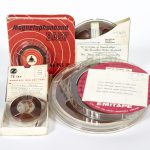
November 6, 2019, by Emma
Preserving your digital content – World Digital Preservation Day 2019
Today we’re celebrating World Digital Preservation Day 2019, an annual event which celebrates the preservation of ‘at risk’ digital collections.
Have you thought about whether you will be able to continue to access the memories you create today? Do you back up your photos and videos or do you rely on cloud service providers to continue to provide access to it indefinitely?
- Floppy disks
- Old formats including floppy disks, video VHS and cassette tapes
- MacBook Air and iPads
What are the risks for my digital content?
The growth of digital information and data is exponential as we increasingly create very little printed information. Instead the traces of our lives are captured digitally through social media and cloud services such as Facebook and Google.
Many of us also have a variety of electronic or analogue physical devices stored away – from tablets, laptops and hard drives to VHS, cassette tapes, floppy disks and early gaming consoles.
There are a variety of risks for our digital material:
- Hardware obsolescence e.g. 3 ½” floppy disks
- Software obsolescence e.g. will there be a programme that can open this in ten years time?
- Hard drive failure e.g. when your tablet device fails
- Accidental damage e.g. when you accidentally delete your photos
- Malicious damage e.g. when a computer virus corrupts your content
- Over reliance on a single provider to store and access our digital stuff e.g. commercial storage or social media platforms
One of the biggest risks to digital content is ‘benign neglect’. We are used to storing paper records away in a cupboard and being able to easily return to, and use, those records decades later.
If we use this same approach to manage our digital content, we risk it becoming inaccessible within a few short years due to the pace of technological change, the fragility of some digital formats, and the lack of certainty over the long term sustainability of individual cloud storage and social media providers.

Seven ways to preserve your personal digital content
There are lots of small steps that you can take to help ensure your own digital content remains accessible and readable long into the future. We’ve included seven key ways below to get you started. You can find further useful tips and guidance on managing your personal digital archive on the Library of Congress website.
1. File naming and organisation
Try to organise your files in a logical way and use sensible file naming techniques that you (or others) are easily able to understand.
2. Delete Duplicates
We have so much free storage available to us it is often tempting to keep everything but regularly managing your content by deleting duplicated, outdated or unwanted content will help to keep your content manageable and easier to preserve.
3. Email management
The same goes for managing our emails – it can simply become an overwhelming task to manage.
Make it easier to find the content that is important to you by:
- Deleting unimportant, low-value emails immediately
- Using Rules to direct newsletters or other content into dedicated folders
- Tagging relevant emails with descriptive information
You can also back up your email to a separate storage location for extra piece of mind (e.g. back up your Microsoft Outlook email, or make use of Google’s takeout service)
4. Back up and storage
Make sure you back up your important digital content in, at least, two separate places and understand on what basis your storage is provided to you.
You need stable, reliable storage and to be sure that it is backed up on a regular basis. It is a good idea to have your important files backed up to a different storage service or device as an extra protection against loss.
For University of Nottingham staff and students, OneDrive gives you automated backups and is a secure solution for keeping personal data.
5. Social media content
Consider how important it is to you to be able to access your social media presence in the future. Many social media platforms allow you to download a copy of your content. This can be really useful should there be any interruptions to a particular platform’s service.
How to download your content from:
6. Websites
If you lose access to a website, check the Internet Archive Wayback Machine. Internet Archive aims to preserve as much of the web as possible and you might be able to find websites which have disappeared in their collection.
There are a range of free tools (such as webrecorder) which allow you to ‘record’ your journey around a website and return to it at a later date. This can be particularly useful when undertaking study or research.
7. Research Data
If you are carrying out a research project, the Libraries Research Support team can provide advice and guidance to help you plan, manage, store and share your research data and publications.
- CDs and Floppy Disks from Manuscripts and Special Collections
- Video VHS and Cassette Tapes from Manuscripts and Special Collections
- Old tape formats from Manuscripts and Special Collections
Preservation in Libraries
University of Nottingham Libraries have a long history of collecting and caring for materials in all formats including research data, institutional records and family and estate and personal papers.
Our Manuscripts and Special Collections team have an extensive image digitisation programme caring for a wide variety of analogue and digital media formats. The team are currently working to transfer content from physical formats at risk (such as VHS, Audio Cassette tapes and CD-ROMs) into an actively managed online digital preservation repository.
Manuscripts and Special Collections also collect ‘born digital’ items such as Microsoft Office documents, emails, websites, digital photographs, and digital building plans.
The team’s work will ensure continuing access to this content for our current community and future generations.
No comments yet, fill out a comment to be the first







Leave a Reply